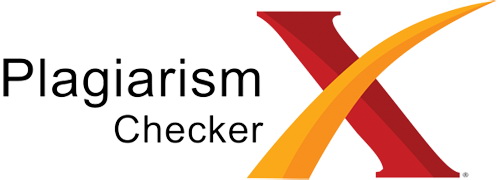Code Mixing Used by Tutors at Bananaina English Course
DOI:
https://doi.org/10.53863/e-jou.v5i02.1555Keywords:
Bilingualism & Multilingualism, Code-Mixing, SociolinguisticsAbstract
The investigation centers on tutors’ code-mixing at Bananaina English Course during 2023–2024. The objectives encompass discerning code-mixing variants employed by instructors and unraveling their underlying motivations. This inquiry adopts a qualitative descriptive approach, spotlighting three English educators. Data collection entailed interviews, direct observation, and audio documentation, then interpreted through Muysken’s (2000) and Hoffmann’s (1991) frameworks. Findings reveal alternation code-mixing predominated (53%, 84 utterances), followed by insertion (28%, 45 utterances) and congruent lexicalization (19%, 31 utterances). Tutors engaged in code-mixing chiefly to elucidate concepts and foster rapport. Examining code-mixing illuminates linguistic adaptation in diverse settings and enriches comprehension of language acquisition in multilingual milieus. Such insights may refine pedagogical strategies in heterogeneous classrooms. Moreover, code-mixing research elucidates the psychological and sociocultural dimensions of linguistic variation, shedding light on dynamics of power, identity, and communicative norms.
References
Budiarsa, I. M. (2015). Language, Dialect And Register Sociolinguistic Perspective. Retorika:Jurnal IImu Bahasa, 1(2), 379–387. https://doi.org/https://doi.org/10.22225/jr.1.2.42.379-387
Hidayah, R., & Apsari, Y. (2022). Code Mixing in Cinta Laura’s Vlog. Project (Professional Journal of English Education), 5(2), 274–279. https://doi.org/https://doi.org/10.22460/project.v5i2.p274-279
Hoffman, C. (1991). Introduction to Bilingualism. Rouledge.
Hosain, D. M., & Kapil, B. (2015). A case study in Code-Mixing among Jahangirnagar University Students. International Journal of English and Literature, 6(7), 123–139. https://doi.org/http://dx.doi.org/10.5897/IJEL2015.0782
Hutapea, N. R. A. (2024). Code-Switching and Code-Mixing Found in a Youtube Channel Called Nessie Judge. Sintaksis, 2(5), 192–200. https://doi.org/https://doi.org/10.61132/sintaksis.v2i5.1022
Lestari, G. N., Susilawati, E., & Suhartono, L. (2022). The Occurrences of Code-switching and Code-mixing in the Novel Me and You Versus the World. JEEP(Journal of English Education Program), 3(1), 1–6. https://doi.org/dx.doi.org/10.26418/jeep.v3i1.47423
Mansuri, S. N., & Kothakonda, S. (2023). Alternation Code-mixing of Chhattisgarhi Conversations. European Journal of Language and Culture Studies, 2(5), 12–19. https://doi.org/https://doi.org/10.24018/ejlang.2023.2.5.108
Muysken, P. (2000). Bilingual Speech: A Typology of Code-Mixing. Cambridge University Press.
Poplack, S., & Walker, J. (2003). Pieter Muysken, Bilingual speech: a typology of code-mixing [Review of the book bilingual speech: A typology of code-mixing, by Pieter Muysken]. Journal of Linguistics, 39(3), 678–683. https://doi.org/http://dx.doi.org/10.1017/S0022226703272297
Sinamo, C. B., Astuti, U. P., & Ivone, F. M. (2024). Code Switching and Code Mixing: An Analysis in Boy William’s Reality Show ‘The Family.’ Jurnal Onoma Pendiikan Bahasa Dan Sastra, 10(2), 1506–1516. https://doi.org/http://dx.doi.org/10.30605/onoma.v10i2.3504
Swandani, A., Nababan, M. ., & Santosa, R. (2022). Analysis of Code Switching and Code Mixing Translation Quality in Yowis Ben Film Structure. IJELTAL (Indonesian Journal of English Language Teaching and Applied Linguistics), 6(2), 289–395. https://doi.org/http://dx.doi.org/10.21093/ijeltal.v6i2.1087
Waris, A. M. (2012). Code Switching and Mixing (Communication in Learning Language). Jurnal Dakwah Tabligh, 13(1), 123–135.
Wulandari, S. (2016). Indonesian-English Code Mixing in Raditya Dika’s Manusia Setengah Salmon. Journal on English as a Foreign Language, 6(1), 71–82. https://doi.org/https://doi.org/10.23971/jefl.v6i1.430
Downloads
Published
How to Cite
Issue
Section
License
Copyright (c) 2025 Andrian Nuriza Johan, Tri Hartina

This work is licensed under a Creative Commons Attribution-ShareAlike 4.0 International License.
Authors retain copyright and grant the journal right of first publication with the work simultaneously licensed under a Creative Commons Attribution-ShareAlike 4.0 International License that allows others to share the work with an acknowledgment of the work’s authorship and initial publication in this journal













